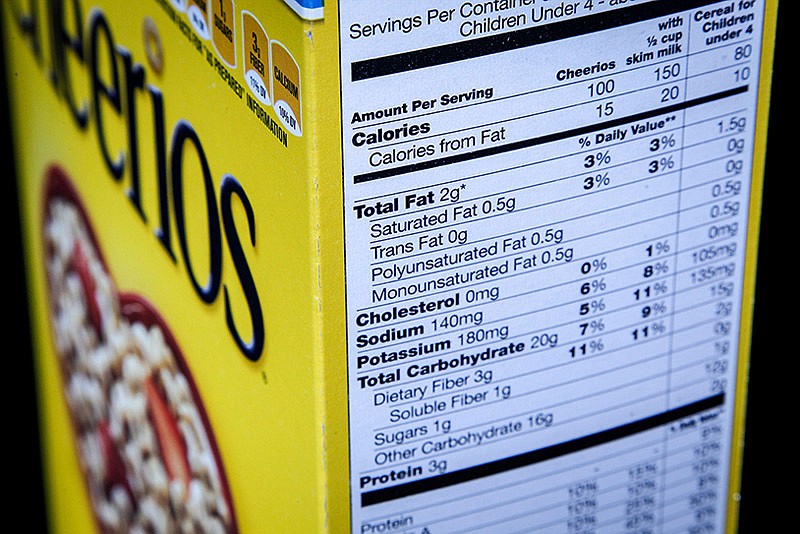Did you know, the current nutrition facts label being used on packaged foods was designed more than 20 years ago? In May 2016, the FDA announced the new nutrition facts label for packaged foods.
The new label reflects the link between diet and risk of chronic disease and shifts focus to calories and serving sizes in helping consumers make healthier food choices. So what exactly will be changing?
Servings
"Number of servings" and "serving size" will have an increased font size and bold type to highlight serving size information.
What is considered a "single serving" has changed in the time since the original nutrition label was created. Serving sizes have been updated based on amounts of food and beverages people are actually eating. For example, a serving of ice cream is being increased from cup to 2/3 cup, a serving of soda is increasing from 8 ounces to 12 ounces.
Packages with one to two servings (ex. 20-ounce soda or 15-ounce can of soup), will be required to have calories and nutrients for the entire package because people typically consume the package in one sitting.
For products larger than a single serving that could be consumed in one sitting, "dual column" labels will be required that indicate the amount of calories and nutrients "per serving" and "per package" (ex. 24-ounce bottle of soda or a pint of ice cream).
Calories
In addition to "servings per container" and "serving size," "calories" will also have an increased font size and bold type.
Fats
"Calories from fat" is being removed, as research supports that the type of fat consumed is more important than the actual amount.
Added sugars
The amount of added sugar in grams and percent of daily value will be required. Added sugars are those added during processing or packaging of foods. Healthy eating patterns limit added sugars to less than 10 percent of calories per day.
Nutrients
Vitamin D and potassium will now be required nutrients along with calcium and iron, as they are nutrients Americans commonly fall short of. Vitamin A and C are no longer required.
Footnote
The footnote at the bottom of the label has been updated to better explain percent of daily value and put in perspective nutrients in a total daily diet.
Most manufacturers must comply with the new design by July 26, 2018, while smaller business will have until 2019 to comply. Keep an eye out - you may have started to see the updated label on some packaged foods as some companies have already begun implementing the new design.
Try out this delicious fall recipe for a quick dish packed full of nutrients.
BUTTERNUT SQUASH ARUGULA PIZZA
Makes: 1 serving
Total Time: 40 minutes
1 cup peeled and chopped butternut squash
1 100 percent whole-grain pita round
1/4 cup tomato sauce
1/4 cup sliced red onion
1 teaspoon olive oil
1/2 cup fresh arugula
1 ounce feta cheese
1 tablespoon balsamic vinegar
Black pepper (to taste)
Add squash to a pot of boiling water and cook 10-15 minutes, until tender but still firm. Drain and set aside.
Preheat oven to 400 degrees. On a baking sheet, place pita round and spread tomato sauce onto it.
Evenly distribute squash on pita and top with sliced onions.
Drizzle olive oil over pita and bake 15 minutes.
Finish by topping with arugula, feta, balsamic vinegar and black pepper to taste.
Rachel Werner is a registered dietitian at SSM Health/St. Mary's in Jefferson City. She received her Bachelor of Science in dietetics from Missouri State University in 2016 and completed 1,200 hours of supervised practice in Jefferson City through Lenoir-Rhyne University's distance dietetic internship. During her internship, Werner had the opportunity to work alongside dietitians and other nutrition and health professionals in the Mid-Missouri community. She completed clinical experience at SSM Health/St. Mary's where she was offered a position and is currently employed as a clinical dietitian.

